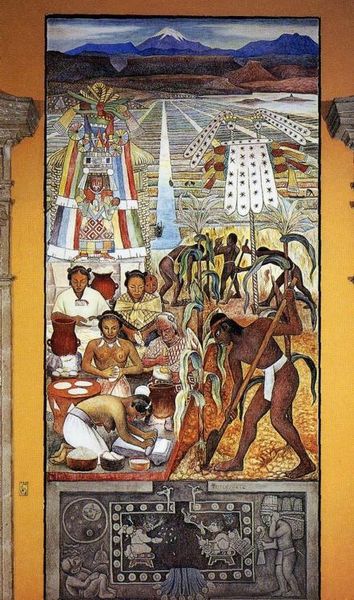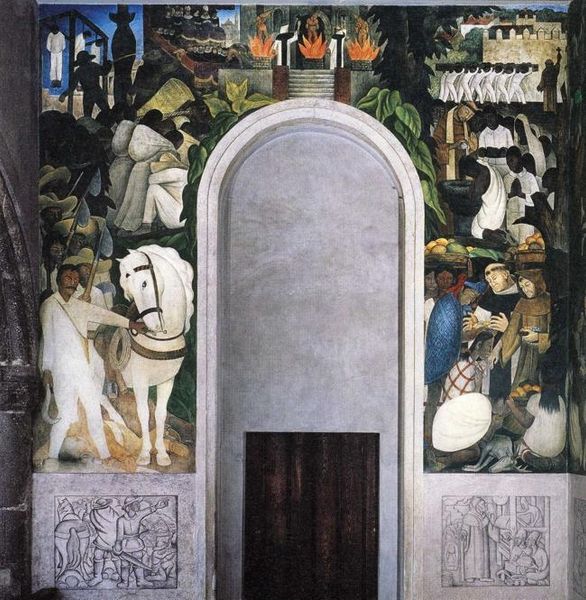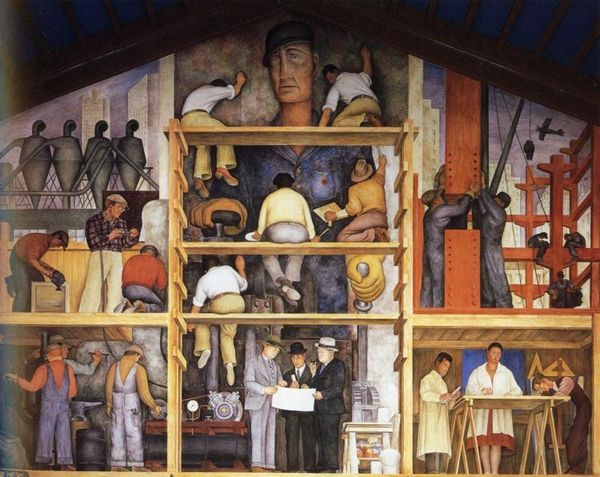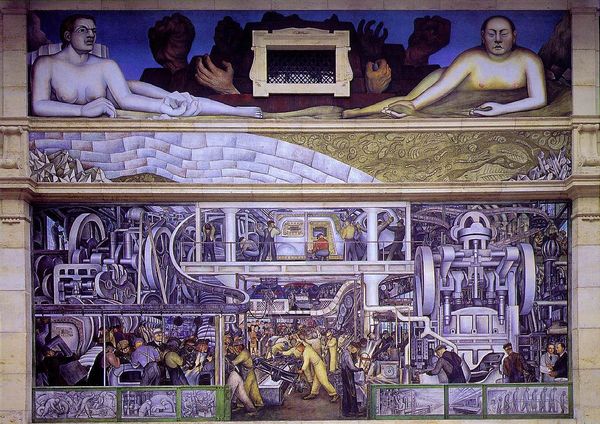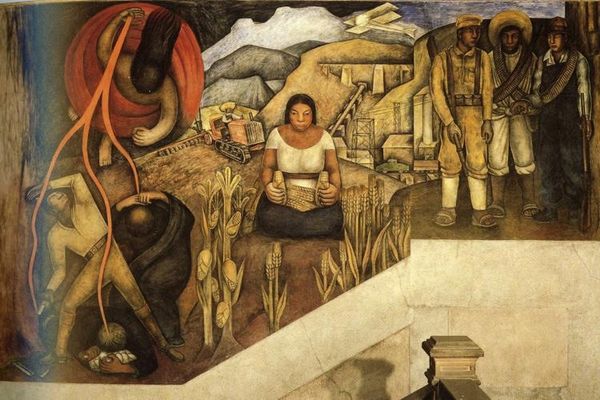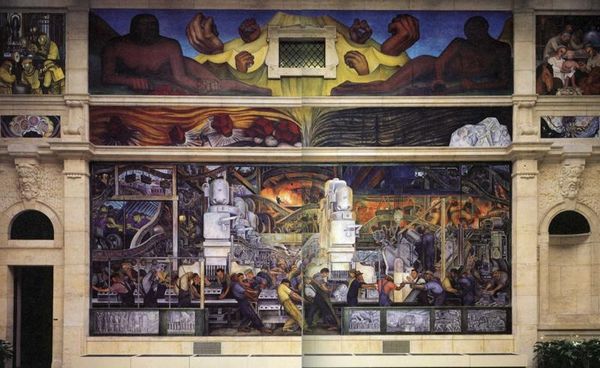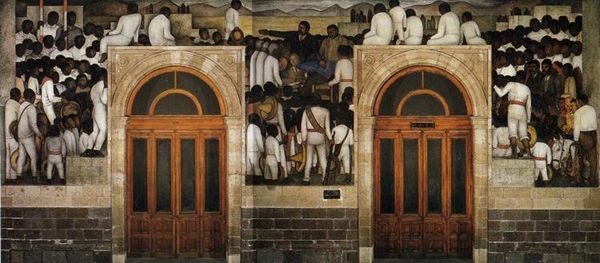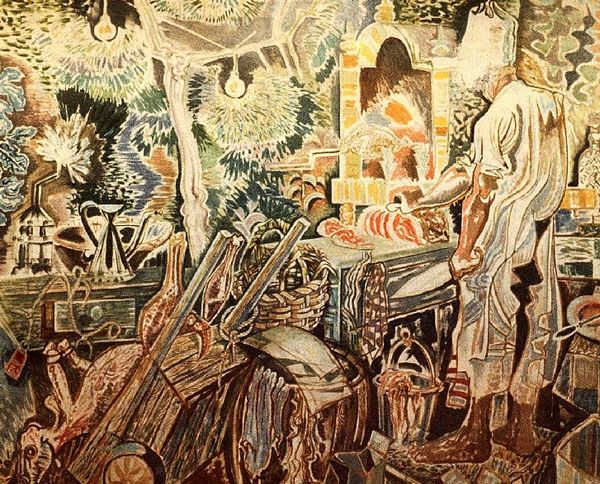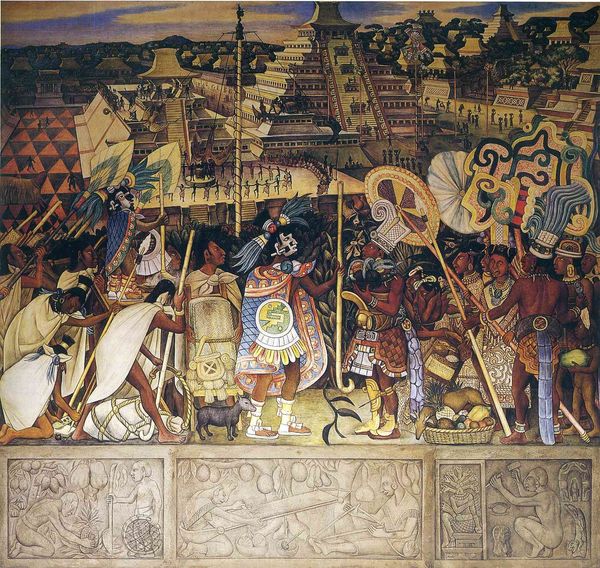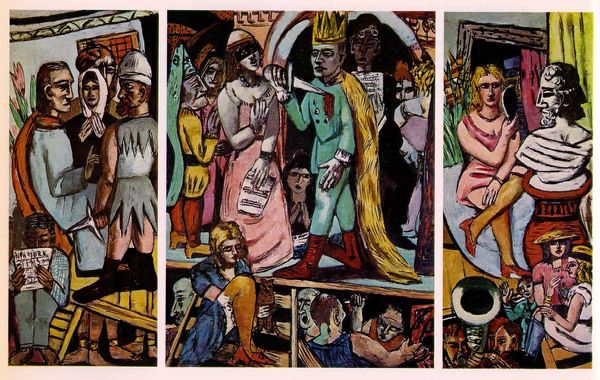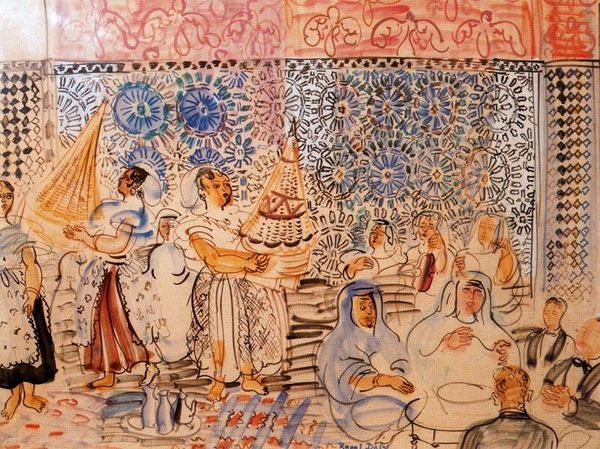
tempera, mural
#
tempera
#
figuration
#
social-realism
#
oil painting
#
mexican-muralism
#
genre-painting
#
mural
#
realism
Copyright: Diego Rivera,Fair Use
Editor: Diego Rivera’s mural, *The Papermakers*, created in 1950, is a powerful piece of social realism in tempera, right here in the Palacio Nacional in Mexico City. The depiction of labour is so central to its message and the colour palette feels so grounded. How do we understand this dedication to the worker in this setting? Curator: Rivera’s placement of this mural within the Palacio Nacional elevates the common worker to the level of historical significance typically reserved for political figures and landmark events. It is not merely documentation but also a powerful statement of social and cultural value. Where would we traditionally see depictions of labourers displayed in art, versus political leaders, perhaps? Editor: That’s true. I'm picturing academic painting or maybe photography as potentially more traditional ways of seeing working people depicted, whereas a national palace feels like it demands a level of formal, political, historical subject matter. Curator: Exactly. Rivera uses muralism, with its inherent public accessibility and grand scale, to create a powerful visual narrative. Note the influence of pre-Columbian art. See how Rivera incorporates Aztec imagery and symbols at the base of the murals to connect the modern paper-making process with Mexico's rich artistic past? It’s a strategic move to validate Indigenous traditions, right there at the centre of political power. Editor: So, the architectural setting isn’t just incidental, but totally integral to understanding the mural’s message of national identity? Curator: Precisely! The palace itself becomes a canvas for rewriting history from a worker’s perspective, embedding the dignity of labour in the heart of Mexican national identity. Rivera understands the visual and political language of public space. Editor: That connection between history and the space that holds it is key. I see how art can make history both visible and debatable. Curator: And, equally important, feel relatable. We must not forget the very human element when evaluating the political function of this mural.
Comments
No comments
Be the first to comment and join the conversation on the ultimate creative platform.
